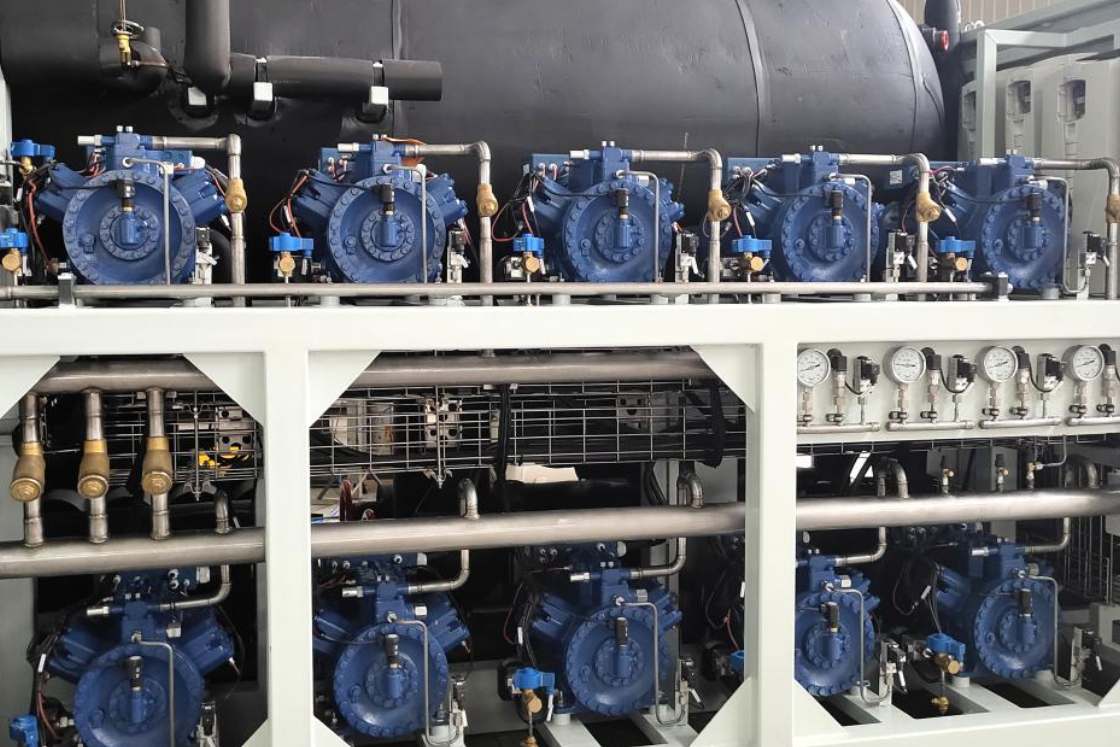Refrigeration technology for the ice arenas in Beijing.
Not only speed skaters, figure skaters or hockey players give their best at competitions, refrigeration technology is also getting better and better.
If you want to be a system supplier on the winners' rostrum - to use the image of sport - you have to be convincing in three disciplines: Experience, efficiency and climate protection. And durability as the free skate. Because today, economic efficiency alone no longer dominates; environmental and climate protection as well as sustainable operation are often among the most important criteria when awarding contracts.
Environmentally friendly systems were also put out to tender in Beijing, where new refrigeration technology was ordered for 15 ice rinks in view of the competitions in spring 2022. Seven of these systems are based on CO2 plants, i.e. they use a natural refrigerant which, with its GWP (Global Warming Potential) of one, is much more climate-friendly than classic synthetic refrigerants as they used to be.
Bock compressors are on board in Beijing
Compressors from Bock GmbH, headquartered in Frickenhausen, were chosen for four of the seven ice rinks that operate with CO2 cycles. The German supplier, which also has a production facility in China, has gained experience in the construction of transcritical and subcritical CO2 compressors over many years, which was certainly an important criterion in the awarding of the contract.
Plant makes hot and cold at the same time
In addition, Bock GmbH could already show ice arenas as references, where plants with Bock compressors produce the required temperatures for cooling and heating. In this context, heating is a desirable side effect. This is because the waste heat from the refrigeration technology can be used to heat public areas or to prepare hot water. By providing heating and cooling at the same time, a lot of energy can be saved. Incidentally, hot water preparation is a task that - paradoxical as it may sound - is also important for ice preparation. After all, after intensive use, the grooves in the ice created by skating must be closed. This is best achieved by melting with hot water: the grooves close and the applied water or melted ice freezes again to form a fresh, perfect sheet of ice.

First transcritical systems for Chinese ice stadium
The "Capital Indoor Stadium" in Beijing, which can accommodate up to 18,000 visitors, features a technical premiere: the first transcritical CO2 system in a Chinese ice arena. It consists of two units, each with twelve transcritical Bock compressors of the type HGX34/290-4 S CO2T (6 compressors each unit) and HGX34/310-4 ML CO2T (also 6 compressors). In total, the system provides 1,100 kW of cooling capacity, with redundancy provided. This means that the 61 x 31 m ice surface of the winter sports facility can continue to be used without interference even in the event of malfunctions.
Transcritical Bock compressors are also found in the "Ice Skating Hall", whose area, also 61 x 31 m, is used for training. Here, a compressor group with five HGX46/345-4 S CO2T and five HGX46/440-4 ML CO2T each is in operation. In the nearby "Ice Temple", the same technology is used, but in duplicate because of the two ice surfaces. All compressor assemblies with Bock machines were assembled in China.

Small compressors for a large control range
The high number of compressors per rack may have seemed unusual if you know the CO2 compressor portfolio of Bock GmbH. Theoretically, it would have been possible to supply the required cooling capacity with fewer compressors of greater capacity. But here the choice fell on small models because they allow the cooling capacity to be optimally adapted to the demand. After all, much more power is needed to produce or prepare the ice surfaces than to maintain the temperature.
Incidentally, the maximum output of the system in the “Capital Indoor Stadium” is high enough to allow the preparation of the almost 2,000 m² ice surface within only two hours. This is the only way to hold two sporting events on the same day, with the athletes enjoying the same good conditions in the afternoon as in the morning. A sporting achievement - perhaps not only worthy of a medal, but also a record.
